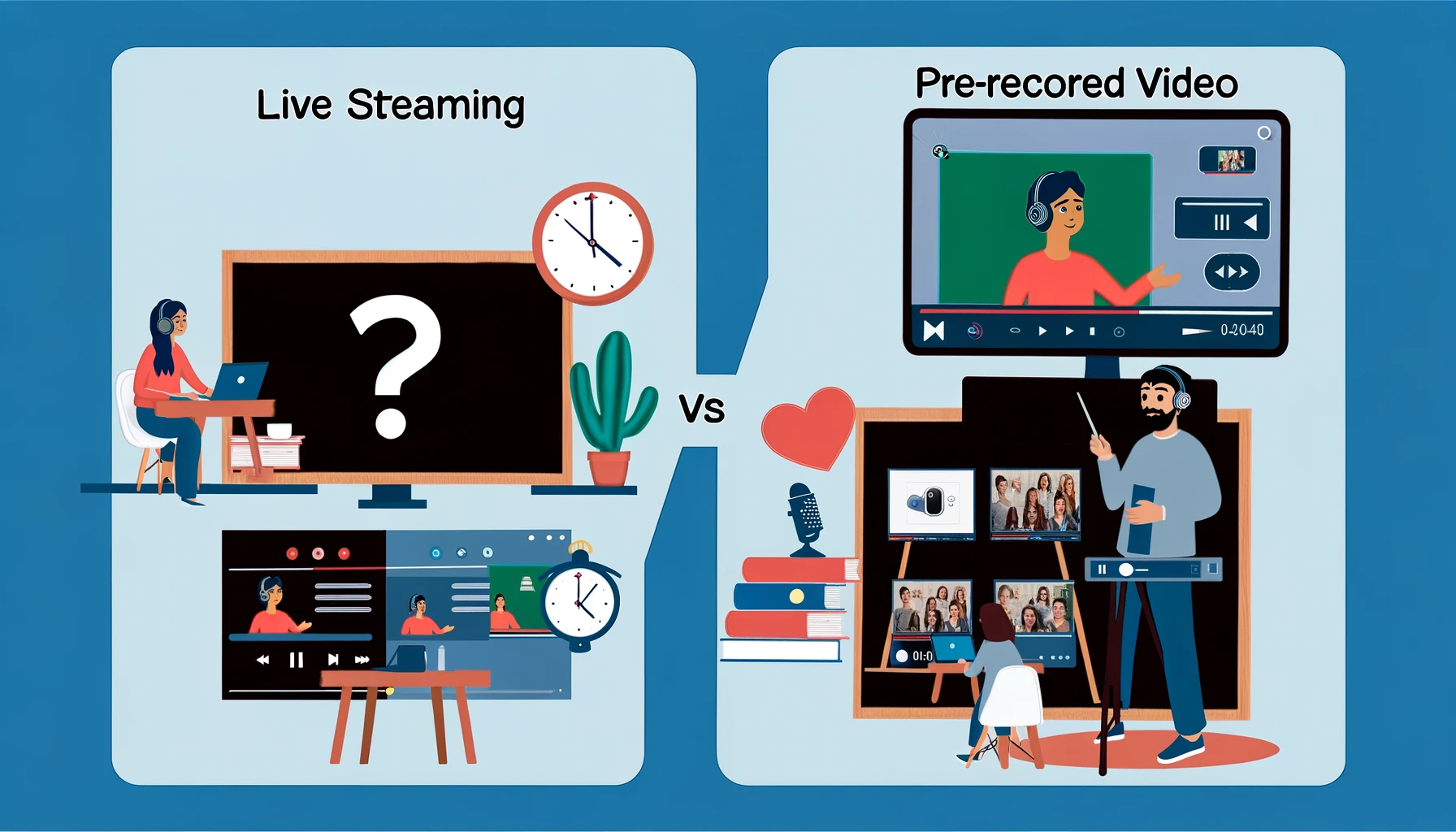Live Streaming vs. Pre-Recorded Videos: Choosing the Right Method for Your Online Courses with TPStreams

The world of online learning is booming, and with it comes a variety of methods to deliver engaging and effective courses.
Two popular choices are live streaming and pre-recorded videos.
Each method boasts its own strengths and weaknesses, and the “best” option ultimately depends on the specific type of course you’re offering and your target audience.
Live Streaming: The Interactive Edge
Live streaming offers a dynamic and interactive learning environment, fostering a sense of discipline for both instructors and students.
- Benefits:
- Increased engagement and discipline: The live aspect can motivate both instructors and students to be well-prepared and focused, as they know real-time interaction and potential questions are imminent. This can lead to better time management and organization on both sides.
- Real-time interaction: Students can engage directly with the instructor, ask questions, and participate in discussions, fostering a sense of community and immediate support.
- Flexibility and adaptability: Instructors can adapt their teaching based on student questions and feedback in real-time, making the learning experience more responsive.
- Drawbacks:
- Scheduling constraints: Requires both instructor and students to be available at a specific time, which may be challenging for busy schedules.
- Technical difficulties: Potential for technical issues like connectivity problems or unexpected delays can disrupt the learning experience.
- Limited control over content: Instructors have less control over the final product, as mistakes or errors happen live.
Pre-Recorded Videos: On-Demand Learning at its Finest
Pre-recorded videos provide flexibility and convenience for both instructors and students.
- Benefits:
- Accessibility: Students can access the course content at their own pace, fitting it seamlessly into their schedules.
- Control over content: Instructors can meticulously edit and refine the content to ensure the highest quality and polish the final product.
- Rewind and replay: Students can easily revisit specific sections of the course to solidify their understanding.
- Drawbacks:
- Limited interaction: The one-way communication format hinders real-time interaction with the instructor and other students, potentially reducing engagement for some learners and lacking the natural motivation to stay focused and disciplined.
- Less dynamic: Pre-recorded content may feel less dynamic and engaging compared to the live interaction of a streamed session.
- Lack of immediate feedback: Instructors receive feedback asynchronously, making it harder to adapt their teaching style for future sessions based on student needs.
Choosing the Right Format: Consider Your Needs
The best way to choose between live streaming and pre-recorded videos is to carefully consider the specific needs of your course and target audience. Here are some factors to ponder:
- Course content: Is the content heavily reliant on real-time interaction and discussion, or can it be effectively conveyed through pre-recorded lectures and demonstrations?
- Target audience: Does your audience value flexibility and on-demand access, or would they benefit more from the interactive nature of live sessions?
- Your preferences: As the instructor, are you comfortable presenting in a live setting, or do you prefer the control and flexibility of pre-recorded video creation?
Versatility is Key with TPStreams
No matter which format you choose, TPStreams can be your one-stop platform for delivering engaging online courses. TPStreams offers user-friendly tools for both live streaming and managing pre-recorded video content, allowing you to seamlessly adapt to your students’ learning styles.
By understanding the strengths and weaknesses of each format, you can choose the best method for your online course and empower your students to excel.

